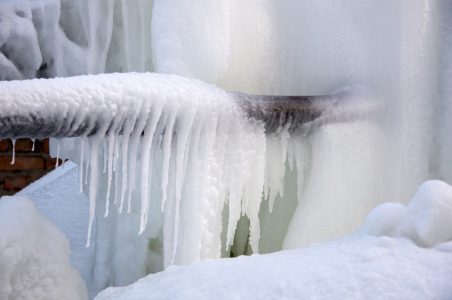Protecting Against Frozen Plumbing in Winter: Essential Tips
Protecting Against Frozen Plumbing in Winter: Essential Tips
Blog Article
The content below in relation to Winter Plumbing Precautions: Preventing Frozen Pipes is immensely enlightening. Don't overlook it.

Winter can wreak havoc on your plumbing, specifically by freezing pipelines. Below's exactly how to avoid it from taking place and what to do if it does.
Intro
As temperatures decrease, the danger of frozen pipes rises, potentially bring about expensive repairs and water damages. Understanding how to stop frozen pipelines is vital for home owners in cool climates.
Recognizing Icy Pipes
What creates pipes to ice up?
Pipelines freeze when subjected to temperature levels listed below 32 ° F (0 ° C) for extended periods. As water inside the pipes ices up, it increases, putting pressure on the pipe wall surfaces and potentially triggering them to burst.
Risks and problems
Frozen pipes can cause water disruptions, home damages, and costly repairs. Burst pipelines can flood homes and trigger extensive structural damage.
Indicators of Frozen Piping
Determining icy pipes early can stop them from rupturing.
Exactly how to determine icy pipelines
Look for decreased water flow from faucets, unusual smells or sounds from pipelines, and noticeable frost on subjected pipelines.
Prevention Tips
Insulating prone pipes
Cover pipelines in insulation sleeves or use warmth tape to safeguard them from freezing temperature levels. Focus on pipelines in unheated or outside areas of the home.
Home heating techniques
Maintain interior areas effectively warmed, specifically areas with plumbing. Open up cupboard doors to allow cozy air to circulate around pipes under sinks.
Shielding Exterior Pipes
Garden pipes and outside faucets
Disconnect and drain pipes yard hoses prior to wintertime. Mount frost-proof spigots or cover outside faucets with protected caps.
What to Do If Your Pipes Freeze
Immediate actions to take
If you think frozen pipelines, maintain taps open to relieve stress as the ice thaws. Use a hairdryer or towels soaked in hot water to thaw pipelines slowly.
Long-Term Solutions
Architectural modifications
Take into consideration rerouting pipes away from exterior wall surfaces or unheated locations. Add additional insulation to attics, basements, and crawl spaces.
Upgrading insulation
Purchase high-quality insulation for pipelines, attics, and walls. Proper insulation aids maintain constant temperature levels and minimizes the risk of icy pipelines.
Final thought
Stopping icy pipes needs aggressive procedures and quick feedbacks. By comprehending the reasons, indicators, and preventive measures, homeowners can safeguard their pipes throughout cold weather.
5 Ways to Prevent Frozen Pipes
Drain Outdoor Faucets and Disconnect Hoses
First, close the shut-off valve that controls the flow of water in the pipe to your outdoor faucet. Then, head outside to disconnect and drain your hose and open the outdoor faucet to allow the water to completely drain out of the line. Turn off the faucet when done. Finally, head back to the shut-off valve and drain the remaining water inside the pipe into a bucket or container. Additionally, if you have a home irrigation system, you should consider hiring an expert to clear the system of water each year.
Insulate Pipes
One of the best and most cost-effective methods for preventing frozen water pipes is to wrap your pipes with insulation. This is especially important for areas in your home that aren’t exposed to heat, such as an attic. We suggest using foam sleeves, which can typically be found at your local hardware store.
Keep Heat Running at 65
Your pipes are located inside your walls, and the temperature there is much colder than the rest of the house. To prevent your pipes from freezing, The Insurance Information Institute suggests that you keep your home heated to at least 65 degrees, even when traveling. You may want to invest in smart devices that can keep an eye on the temperature in your home while you’re away.
Leave Water Dripping
Moving water — even a small trickle — can prevent ice from forming inside your pipes. When freezing temps are imminent, start a drip of water from all faucets that serve exposed pipes. Leaving a few faucets running will also help relieve pressure inside the pipes and help prevent a rupture if the water inside freezes.
Open Cupboard Doors
Warm your kitchen and bathroom pipes by opening cupboards and vanities. You should also leave your interior doors ajar to help warm air circulate evenly throughout your home.

We were brought to that article about How To Avoid Freezing Pipes from an associate on a different site. Do you know someone else who is very much interested in the subject? Do not hesitate to promote it. I thank you for your readership.
Click Here Report this page